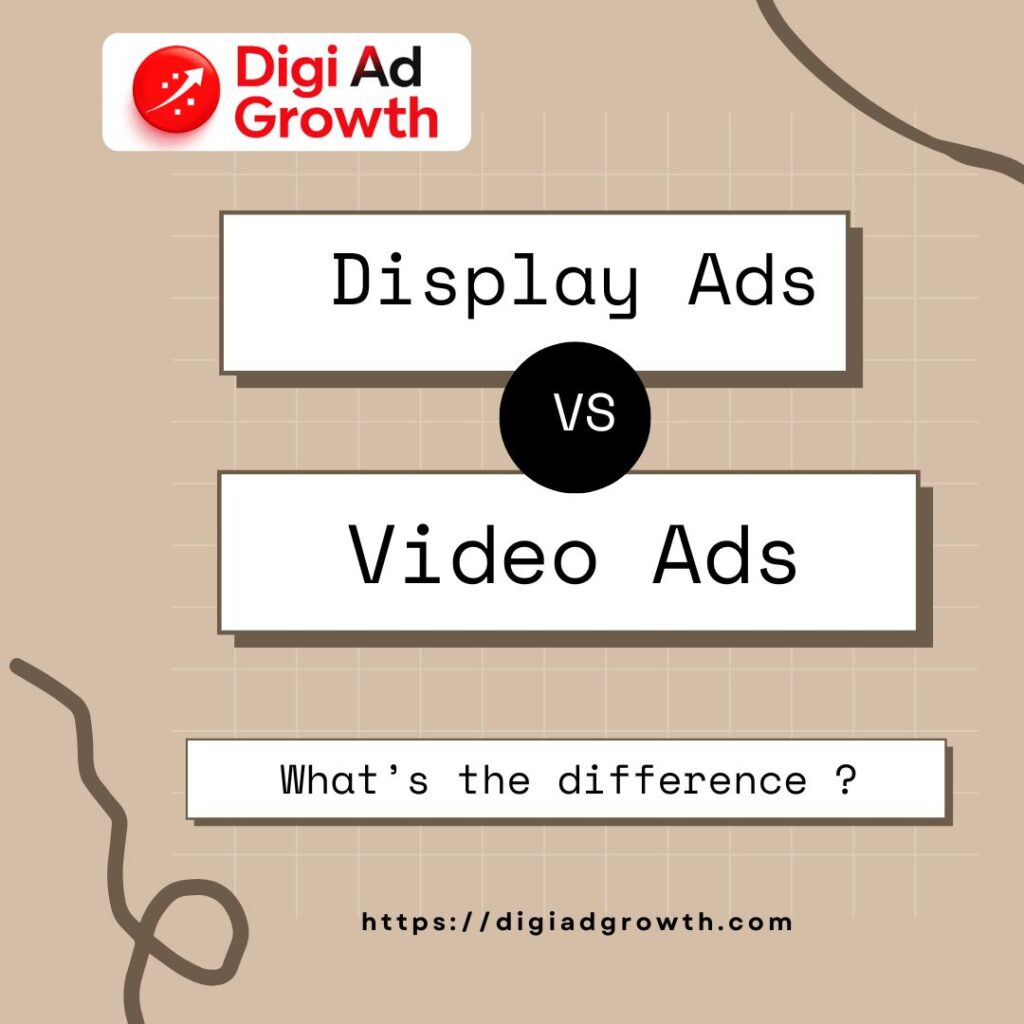In the ever-evolving digital marketing world, businesses are constantly looking for ways to stand out and engage their audiences. Two of the most popular advertising formats—display advertising and video advertising—offer powerful opportunities to boost brand visibility and drive conversions. But which one should you focus on?
Let’s break down the differences between display and video advertising, and help you decide which is the better fit for your marketing goals.

What is Display Advertising?
Display advertising involves the use of static or animated visual banners placed on websites, mobile apps, or social media platforms. These ads can include images, text, or interactive media and are often used to promote products, special offers, or drive traffic to a landing page.
Key advantages:
- Cost-effective: Typically more affordable than video advertising.
- Wide reach: Can appear on a vast number of websites via ad networks like Google Display Network.
- Quick creation: Easier and faster to produce compared to video.
- Effective for retargeting: Great for re-engaging users who previously visited your site.
Display ads are ideal when you want a low-cost, high-impression campaign to stay visible to your audience, especially during the awareness or consideration stages of the customer journey.
What is Video Advertising?
Video advertising uses video content to promote your message and is typically shown before, during, or after online video content. Platforms like YouTube, Facebook, and Instagram are popular for video campaigns.
Key advantages:
- High engagement: Moving visuals and sound grab attention more effectively than static images.
- Stronger storytelling: Great for explaining complex ideas, showcasing products, or creating emotional connections.
- Higher recall: Viewers are more likely to remember a brand from a video.
- Increased conversions: Studies show that video can boost conversion rates significantly.
Video advertising is ideal for brands looking to emotionally connect with their audience or tell a compelling story that static visuals can’t convey.
Display vs. Video: Head-to-Head
| Feature | Display Advertising | Video Advertising |
| Engagement | Moderate | High |
| Cost | Lower | Higher |
| Production Time | Short | Longer |
| Best for | Brand visibility, retargeting | Storytelling, brand awareness, education |
| Ad formats | Banners, pop-ups, rich media | In-stream, out-stream, social video ads |
| CTR (Click-Through Rate) | Typically lower | Typically higher |
Which One Should You Choose?
The choice between display and video advertising depends on your goals, budget, and target audience.
- If you’re looking for affordable, broad reach and want to stay top-of-mind with users through retargeting, display ads are a solid choice.
- If your goal is to build brand trust, explain your product, or make a lasting impression, investing in video ads may offer a better return on investment.
There’s no clear “winner” between display and video advertising—both have their strengths. In fact, the most successful marketing campaigns often use a combination of both formats. By understanding their differences and aligning your ad strategy with your business goals, you can maximize results and connect with your audience more effectively.
